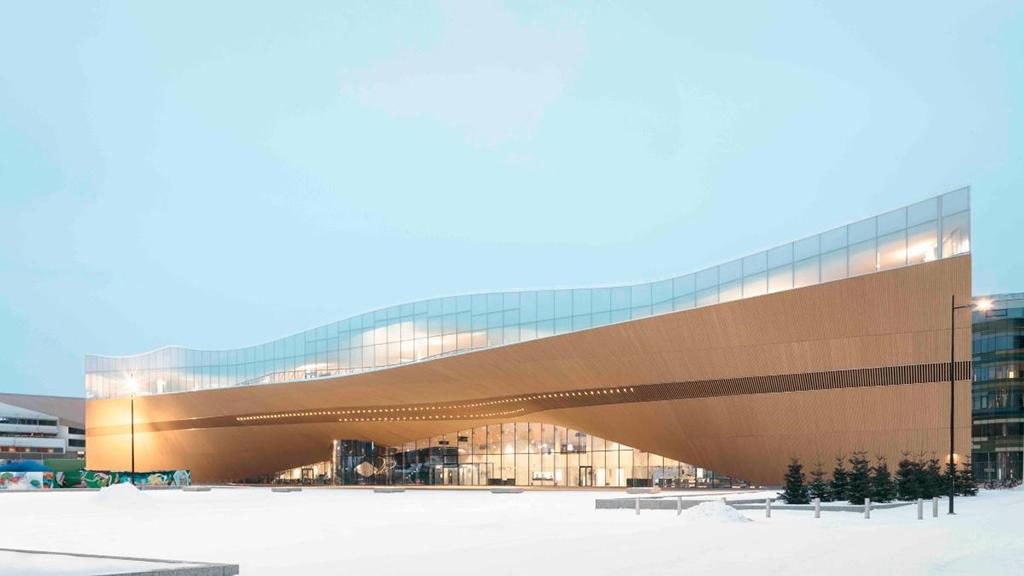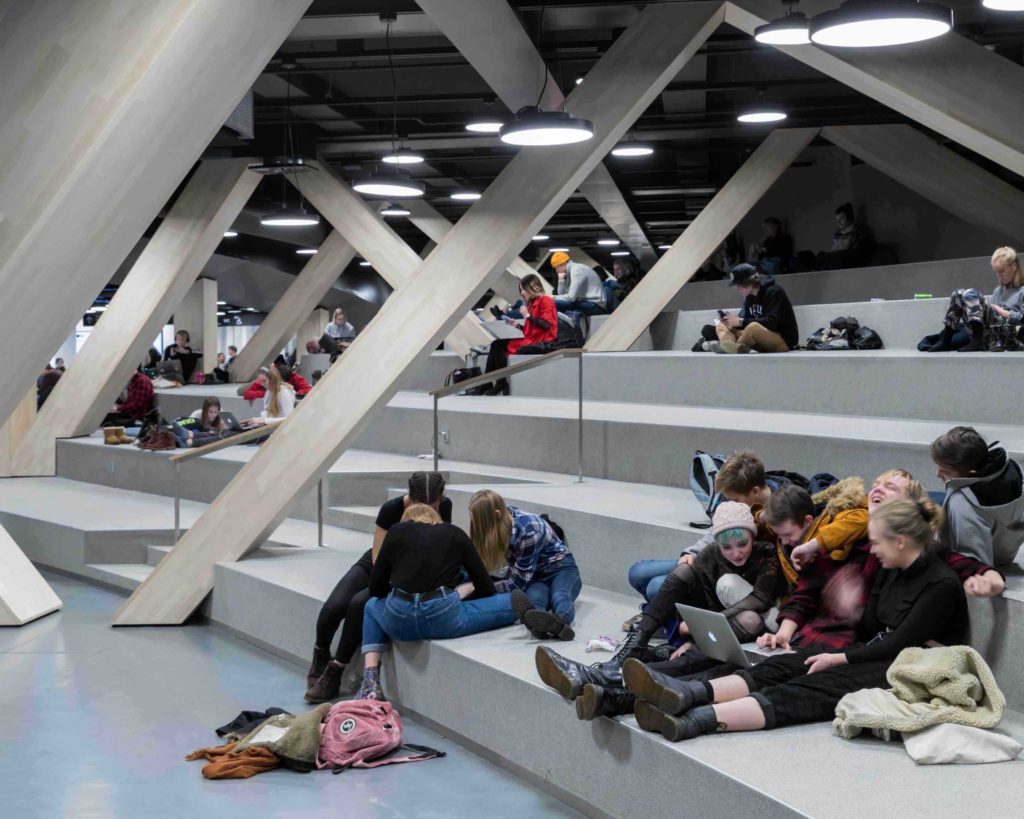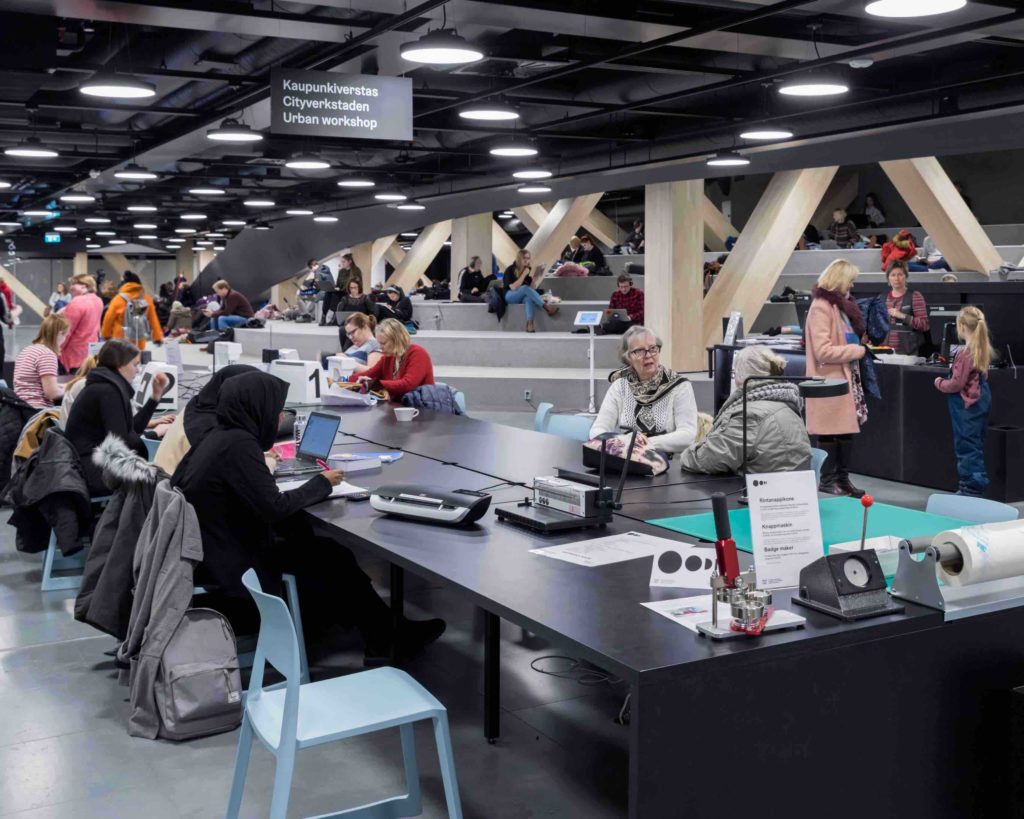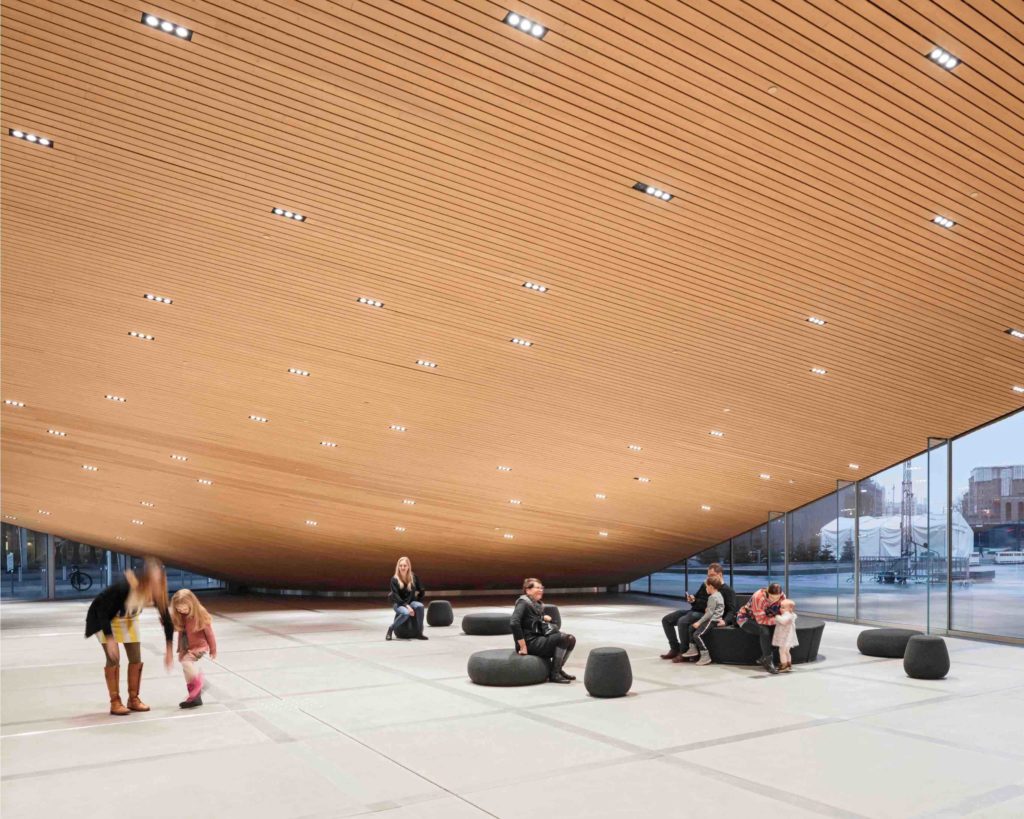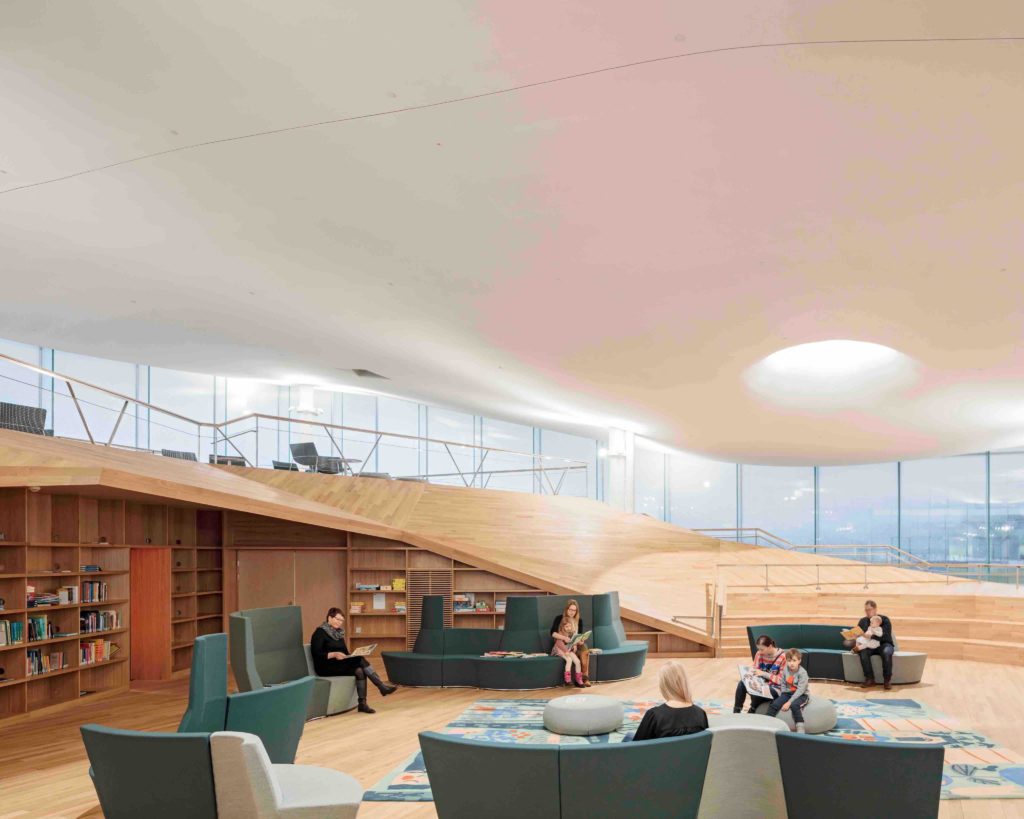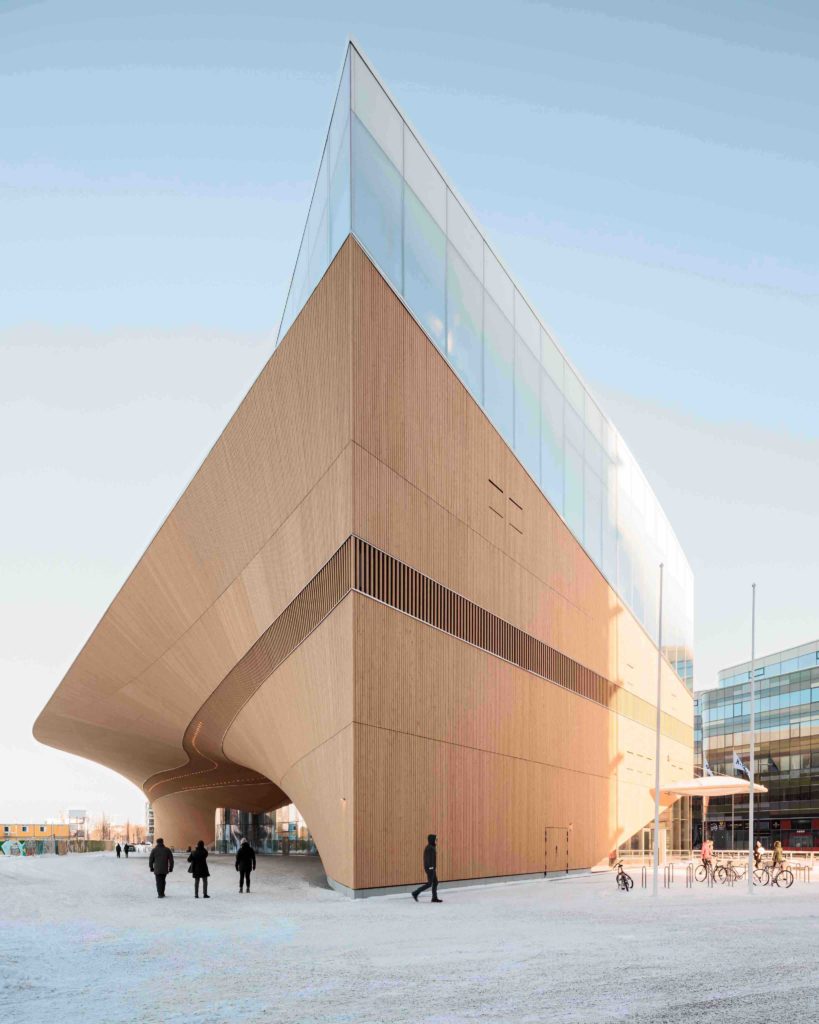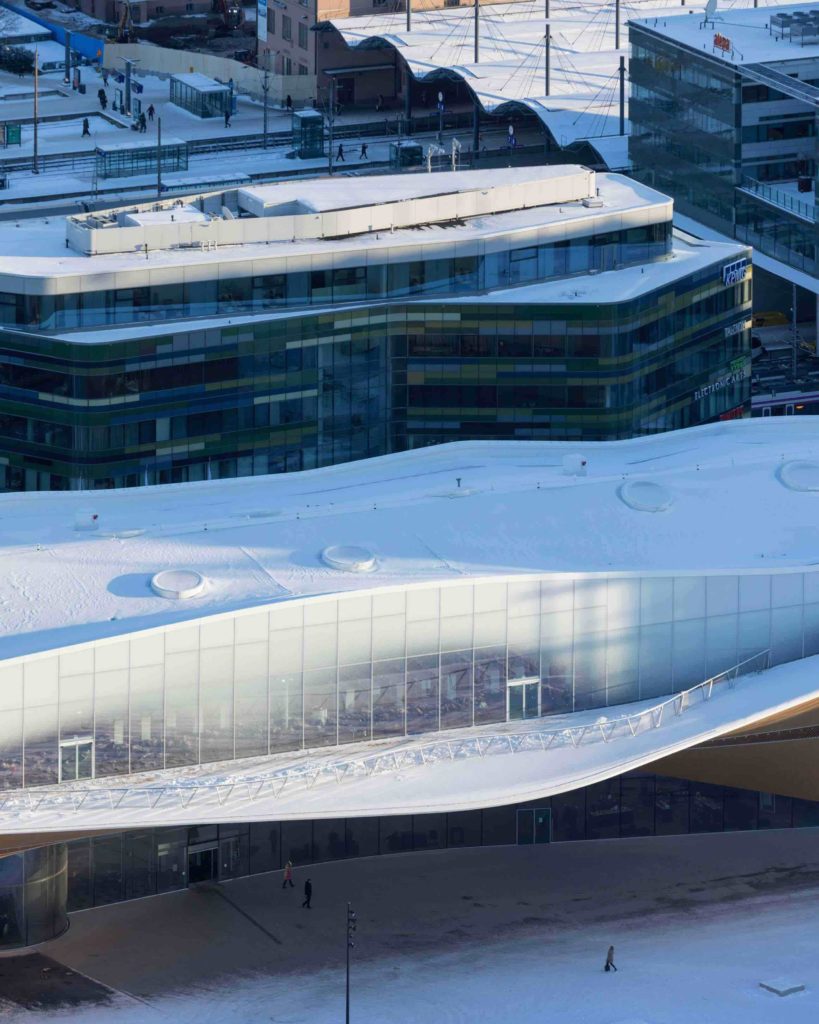New Central Library in Helsinki as a crowd puller
Helsinki’s new Central Library is popular with both residents and visitors alike. And it’s no wonder: the multifunctional building is very attractively designed – including a wooden façade and spiral staircase in the form of a double helix.
The Oodi, Helsinki’s new Central Library, has proven extremely popular with both residents and visitors alike. The building, which opened its doors in December 2018, was already welcoming its one millionth visitor by March 2019. Over 20,000 people visit the library on busy days.
A community centre for all
But people don’t just visit Oodi to borrow or return books. Many simply enjoy spending time there. The “Urban Workshop” is always crowded and the conference rooms and halls that are available for rent are booked out.
Helsinki’s new Central Library admirably fulfils its role as a community centre that’s open to all. The building also features one of the best terraces in the city for enjoying the summer sun.
The Oodi has won or is on the shortlist for a number of international awards, achieving worldwide recognition as a result: the architecture firm ALA Architects is thrilled that the jury and public ranked the Oodi number one in the category “Buildings over 1,000 m²” at the AZ Awards, which are given annually for projects around the world by the US-American magazine for contemporary design and architecture “Azure”. And delighted that it’s on the shortlist for both this year’s WAF Awards as “Architizer A +” and the Mies van der Rohe Prize, and on the long list for the Dezeen Awards too. In Finland, the Oodi received the accolade Steel Construction of the Year 2018.
“Inhabited bridge”
The spatial concept in brief: the Oodi is conceived as an “inhabited bridge” whose span of 100 metres stretches over the open ground floor. The construction, comprising steel trusses and beams, is supported by two massive steel arches that are held together with a reinforced concrete slab.
This solution made it possible for the interior spaces to be column-free and allows for the future construction of a road tunnel underneath the building. Secondary steel girders asymmetrically support the cantilevered balcony and roof canopy from the arch structure.
The Oodi was constructed using local materials and taking the local climatic conditions into consideration. The wooden façades consist of prefabricated spruce modules. Complex curved geometry was designed and manufactured with the help of algorithmic parametric 3D modelling techniques. The glass façades allow for plenty of natural daylight. Energy consumption is on a par with that of a nearly zero-energy building. The estimated design life of the building is 150 years.
A new era of libraries
Located in the heart of Helsinki just a few minutes’ walk from the Central Station, the Oodi consists almost entirely of public spaces and offers a wide range of services, most of which are free.
The design separates the functions of the building into three levels: an active ground floor, a peaceful upper level and an intermediate space that accommodates more specific functions. Besides the library, café and restaurant, the Oodi is also home to “Helsinki Info” – the City of Helsinki’s information centre, “Europe Experience” – the centre for EU-related information, Kino Regina – the National Audiovisual Institute’s cinema, as well as a play area.
Dissolving borders
Its design dissolves the borders between the indoor and outdoor spaces. The Kansalaistori Square continues seamlessly up to and beneath the entrance canopy and into the building. The wooden façade arches over the ground floor like a bridge. Resulting column-free lobby space is ideal for holding events of all kinds. A multipurpose hall can even be used as an extension to the lobby, and the entrance canopy allows the building’s functions to spread out onto the square.
The middle floor consists of multipurpose rooms. It accommodates group workspaces, recording studios, editing rooms and the Urban Workshop, which is equipped with devices such as 3D printers, laser cutters, soldering irons and sewing machines that can be used by the visitors.
On the top floor, the best features of a traditional library meet state-of-the-art technology. The open space is covered by a cloud-like undulating ceiling. The quiet atmosphere is perfect for reading, learning or simply relaxing. Unobstructed views of the city centre can be had through the floor-to-ceiling windows and from the large terrace on the canopy.
Office and logistics spaces on the public floors are kept to a minimum in order to maximize the library area. Administrative functions and archives of the Helsinki Public Library remain in the former main library in the nearby Pasila district.
The anonymous, open, international, two-stage architectural competition for the Oodi began in January 2012 and attracted 544 entries from around the world. The Finnish firm ALA Architects emerged victorious. Construction work began in 2015 and the building was opened to the public in December 2018.
Text: Linda Benkö
Translation: Rosemary Bridger-Lippe
Photos: Tuomas Uusheimo, Iwan Baan
